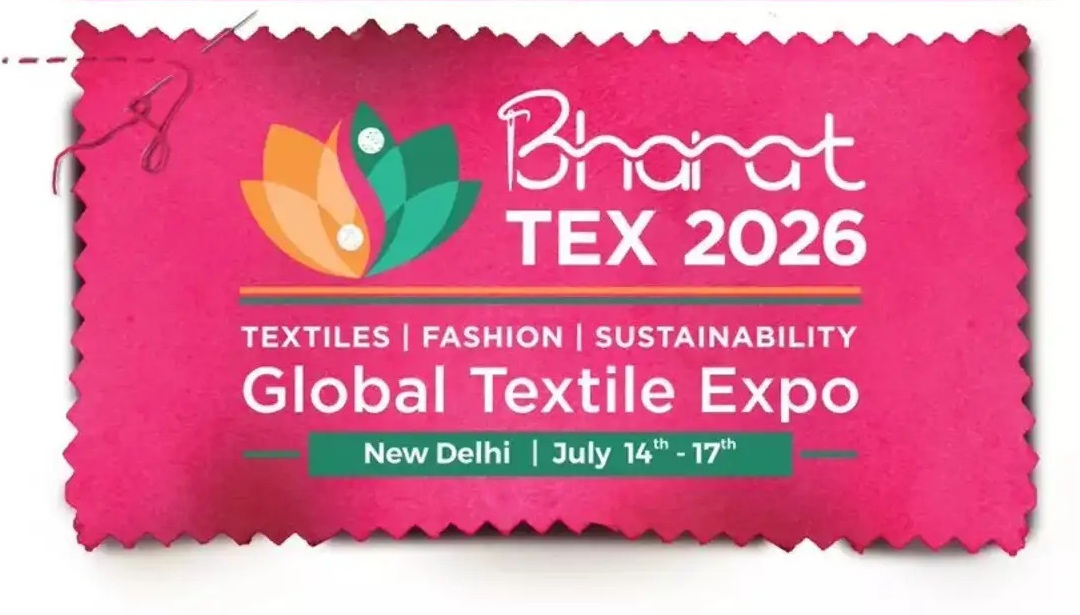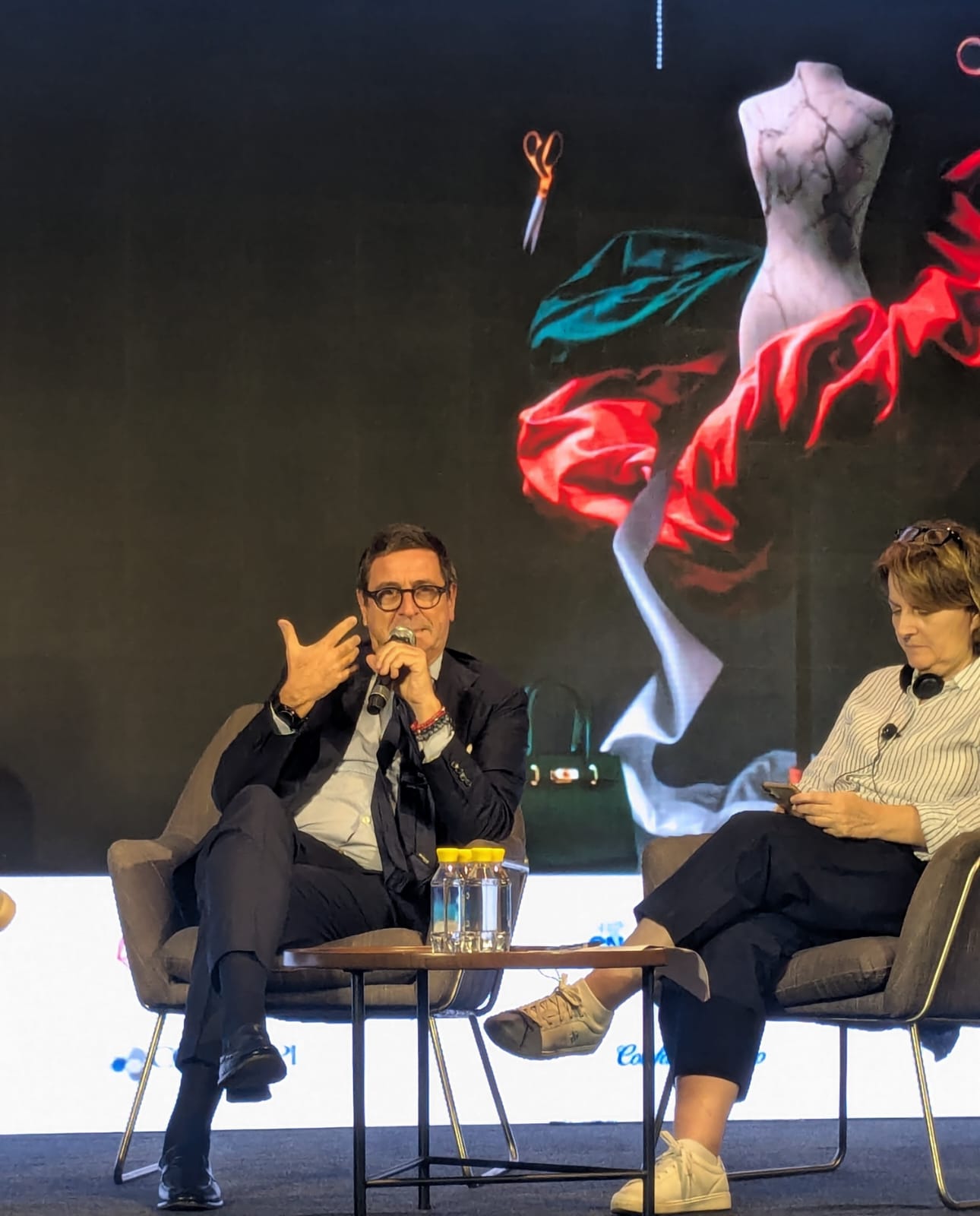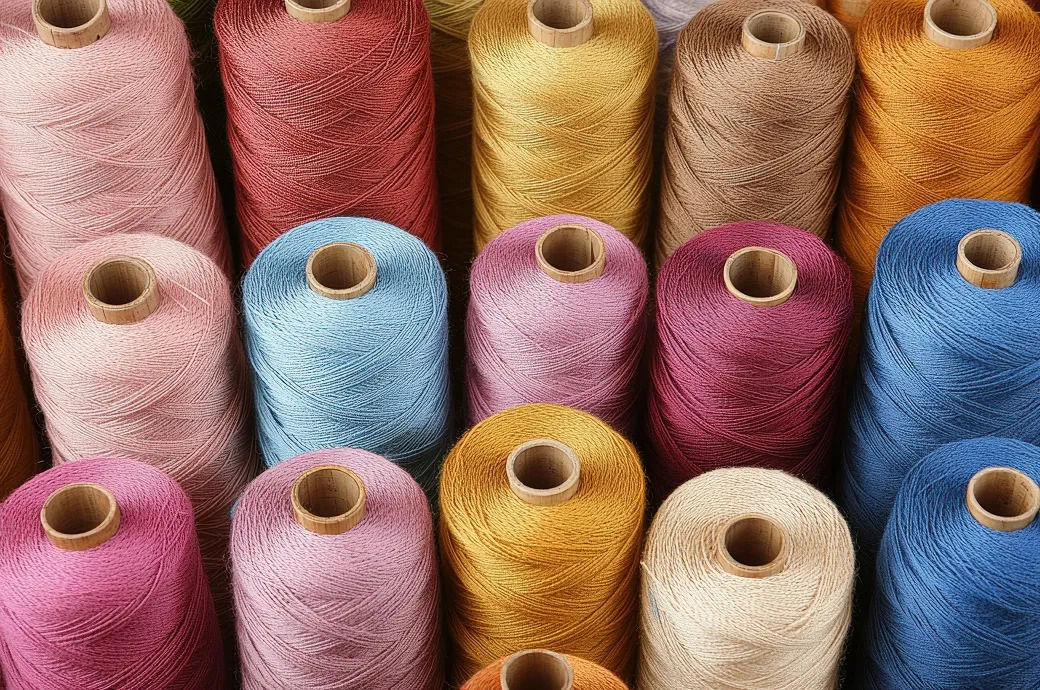FW
Egypt and Bangladesh were the largest importers of PC yarn from India in July, followed by Turkey. South Korea and Bahrain were the major destinations among the 16 new markets found in July. The US, Argentina, Sri Lanka and Portugal were the fastest growing markets for PC yarns while Mexico, Venezuela and Ukraine significantly reduced their import of PC yarns from India.
In July, $9.8 million worth of PV yarns were exported from India. Turkey and Pakistan continued to be largest importers of PV yarns from India in July with a total volume at 1.95 million kg worth $5.7 million. Tunisia was the new major market for PV yarn from India.
China’s demand for cotton yarn has dropped considerably due to a change in policies. Margins on some products are negligible at the moment while some products are selling at a loss as well. China has also reduced its fabric production due to which yarn imports have been impacted. Indian spinners hope for a revival of cotton yarn demand, once the festival season sets in. The revival of US economy and the Euro zone will help spur demand.
Vietnam's garment workers have been granted a pay hike of 12.4 per cent but factory owners want to make that six or seven per cent. They say, a wage hike beyond 6 to 7 per cent would prevent them from making profits, and likely lead to shutdowns and layoffs, ultimately weakening the country’s competitiveness.
They argue even a 10 per cent pay increase would lead to a more than $1.03 billion increase in total labor costs for the 2.5 million workers employed in the sector, including $387 million for insurance payments and $23.6 million for labor union fees. A six to seven per cent increase, on the other hand, would cost a relatively affordable $756 million in additional labor costs.
Regional minimum wages in Vietnam have more than doubled since 2010 and businesses have had to cover higher insurance payments, which have increased from 18 per cent in 2010 to 22 per cent last year. In order to keep business sustainable, factory owners have asked Vietnamese government to consider lowering insurance payments and cutting labor union fees.
Vietnam’s garment workers got the wage hike after months of negotiations. They were looking for a 16 per cent hike but finally had to agree to come down to 12 per cent.
Texcare International to be held in Germany from June 11 to 15, 2016, will see an increase in floor space. The increase in floor space will strengthen most promising product groups at Texcare and ensure greater levels of international participation among both exhibitors and visitors.
Market leaders will be grouped together with new and smaller manufacturing companies as appropriate to their particular product group or groups. So there will be a balanced variety and plurality, which will make things more interesting for the trade and professional visitors who come and, at the same time, provide an even broader reflection of the sector as a whole. There was a need felt for unified platform which can give a rounded picture of the product groups. The larger surface area will also enable additional networking areas to be provided, which visitors to the last Texcare regretted not having.
The textile care sector is a strong and growing market both in Europe and worldwide. The field of textile services is seeing continued growth in terms of textile hire as well as information technologies and merchandise management systems. The ecological aspects of textile care are also becoming important. So it was a logical conclusion that exhibitors at Texcare should be using a larger area for their presentations.
Texcare presents the latest trends and innovations in the laundry and dry-cleaning industry.
www.texcare.messefrankfurt.com/
Alliance is facing difficulties with its inspection work in Bangladesh. There are few engineers in Bangladesh with the expertise required to support remediation. There are no manufacturers of fire doors, sprinklers or other fire protection equipment in Bangladesh. All the equipment must be imported. There is a limited availability of key goods and services. Building regulations are poorly enforced. Counterfeit or substandard equipment has also created fresh challenges for many factories. Political unrest made normal operations difficult and aftershocks of the Nepal earthquake also affected many factories.
The Alliance for Bangladesh Worker Safety is a North American retailers’ platform. It’s committed to developing a sustainable garment industry in Bangladesh. Alliance has identified unauthorised subcontracting as an ongoing problem in Bangladesh’s garment sector. It’s working with member companies for eliminating unauthorised subcontracting, which is preventing the establishment of a truly safe and transparent industry.
The platform is endeavoring to ensure that the garment sector remains an enduring source of economic security and upward mobility for millions of Bangladeshi workers and their families. It is piloting an escalation process, which includes a roundtable meeting with factory representatives. It has threatened to declare factories as non-compliant if they failed to complete remediation within the time frame.
www.bangladeshworkersafety.org/
Production of cotton in Syria has been hijacked by Islamic militants. After seizing oil and grain fields to fund their offensive, jihadis have also taken control of three-quarters of the production of cotton in Syria. The key concern is that Syrian cotton tainted with militant blood could make its way to international markets via Turkish wholesalers. IS-controlled parts of Syria are located close to Turkey, a huge supplier of clothing and fabric to the EU.
Syrian cotton is an issue at top fashion houses of Paris. Buyers of haute couture collections at top labels have become vigilant over the origin of their fabrics. IS has until recently been sending to Turkey raw cotton grown in the Raqqa and Deir ez-Zor regions that account for a third of Syrian output. But Turkey has now officially refused to accept this cotton.
The conflict in Syria has led to a drop in cotton production. If before the war Syria was producing around 6,00,000 ton per year, it has dropped to 70,000, of which 3000 is officially exported. IS militants have begun to sell the raw fibre to intermediaries who transport it to processing centers located in areas under the control of Syrian President Bashar al-Assad's regime. Processing and export of cotton has long been a state monopoly in Syria.
Sheikh Asghar Ali has been chosen chairman of the Pakistan Textile Exporters Association (PTEA). He is a seasoned industrialist and heads a group of modern textile units. He is on the board of charitable, health and educational institutions. Ali has already served PTEA in the same capacity in 2012-13.
PTEA is a facilitator for Pakistan’s textile sector. It protects the genuine rights of members while acting as a bridge between industry and government and other supportive quarters. Presently, Pakistan’s textile industry is in the grip of an unprecedented crisis. Capacity has been severely impaired. Textile exports, both in quantity and value terms, have declined across the value chain. Industrial productivity is low. Rival countries have gained markets that have traditionally been held by Pakistan’s textile exporters.
Ali’s priority would be to attain viability in international markets. PTEA under his leadership would provide policymakers with well-researched recommendations for the development of the textile sector. Prudent policies are needed. Asghar Ali thinks it is time to do away with all wasteful expenditures and adopt austerity without compromising on growth. He has asked his fellow businessmen to improve their human resources that would ultimately increase their efficiency and prepare them to survive in difficult times.
www.ptea.org.pk/
More than 150 garment and fabric manufacturers from over 12 countries, spanning all across the UK, Europe and Mediterranean, are expected to take part in the fifth edition of Fashion SVP. These manufactures belong to the cluster, which produce for brands such as ASOS, Inditex, Phase Eight, French Connection, Coas and Karen Miller. Besides manufacturers, the event will witness the participation of designers, boutique owners and big retailers.
The manufacturers dealing in various categories and segments, ranging from casual and formal knits to woven jerseys and fabrics will make their presence felt. The platform will also provide an opportunity to established sourcing professionals and small brands and labels alike to discuss their work and strategies.
Also, visitors are expected to benefit a lot with the event since they will have a chance to see the garments and fabrics produced by the prominent players in the industry. Moreover, they will have an opportunity to interact with big names from the industry on production and fabrics sourcing.
The event will see hosts of workshops and seminars being organised by participants providing useful information on industry dynamics, knowhow and expertise. Various groups from Portugal, Romania and Turkey are expected to take part in the event.
Knit Show 2015, India's biggest garment accessory and process show featuring a gamut of products and services in the textile and garment took place in Tirupur recently. This year’s edition witnessed a considerable rise in both – exhibitors and visitors. The show successfully provided a platform for manufacturers and buyers to network and source quality accessories, machinery and other inputs.
The 14th edition of Knit Show saw innovations in accessories and machineries on display that play a vital role in enhancing the quality of the knit/woven garments. The show attracted a large number of visitors from Tirupur as well as neighboring textile centers like Coimbatore, Karur, Erode, Salem, Madurai, Chennai, Bangalore and Hyderabad.
The 400 exhibitors included participants from Germany, Portugal, Poland, Japan and China apart from the manufacturers within the country. Some of the attractions were latest versions of automatic screen printing, knitting and embroidery machines, eco-friendly microbial control and protection compounds for natural and synthetic textiles as well as fibres, printing waste water treatment systems for small and medium enterprises, zips and fasteners and fabric printing inks.
www.knitshow.in
All is not well with Bangladesh’s garment manufacturing sector. Still struggling to recover from the loss caused by a month-long political unrest and euro devaluation, stakeholders are in a fix again, thanks to the rise in power and gas tariffs. This has pushed up the cost of production and result and reduced margins for them. They say it will have a negative impact on their competitiveness in the global market.
Abdus Salam Murshedy, President of Exporters Association says prices of power and gas have gone up by 2.93 per cent and 26.29 per cent respectively. It will result in a high cost of manufacturing and this, in turn, will add to declining export earnings that already prevail in the sector. The situation is going to be worse now.
Concerned over the ongoing crisis, Dhaka Chamber of Commerce and Industry (DCCI) stated that apart from manufacturing, FDI inflow the country will also bear the brunt with a rise, owing to the fact that foreign investors avoid investing in a market facing utility crisis. It may be noted that the textile and garment sector in Bangladesh is the biggest user of power and gas.
Despite the Narendra Modi-led NDA government asking Indian companies to focus on manufacturing within the country under the ‘Make in India’ program, many are investing in Ethiopia and Africa to set up units there. Reason: Ethiopian government is offering attractive incentives to woo foreign investors, such as land on decades-long lease, cheap power and duty-free exports to key markets like the US and Europe.
For example, leading fabric and clothing company Raymond has plans to pump in $100 million over the next two-three years for a garmenting unit in Awasa, a lake-side city, which will be one of its largest facilities. According to the company, labour costs in Ethiopia are 50 per cent less against India and power tariffs are almost one-third.
Textile and apparel conglomerate, Arvind, aims to build a six-million-pieces garment plant in Ethiopia because of the long-term lease for factories that the Ethiopian government offers and single-window clearance for industrial projects. Even Kanoria Textiles is setting up a project in the country, again because of the low-costs of labour and power.
With global brands shifting their attention to African countries for their sourcing requirements, and Africa being a major cotton producer is one of the few places in the world, garment makers can establish the entire supply chain from fiber to factory in one location.












